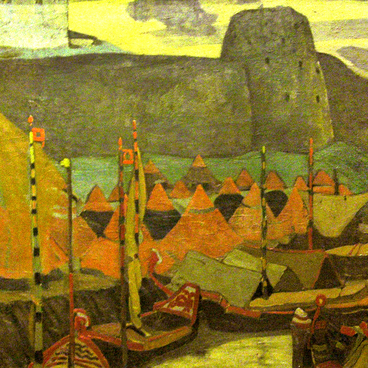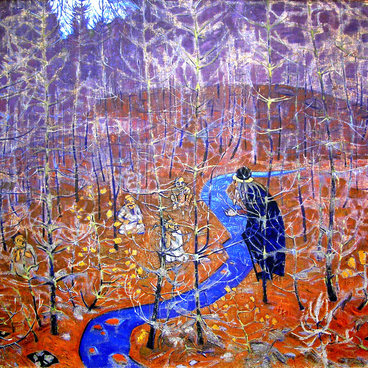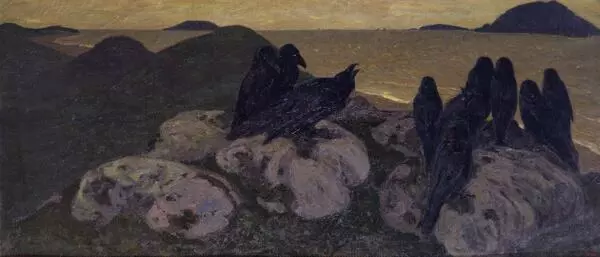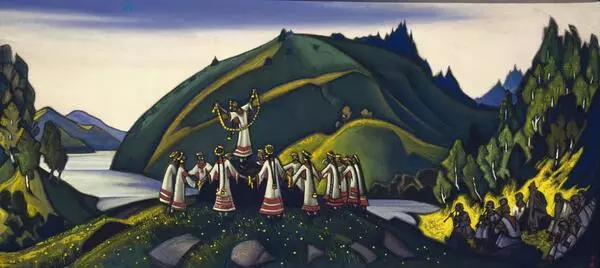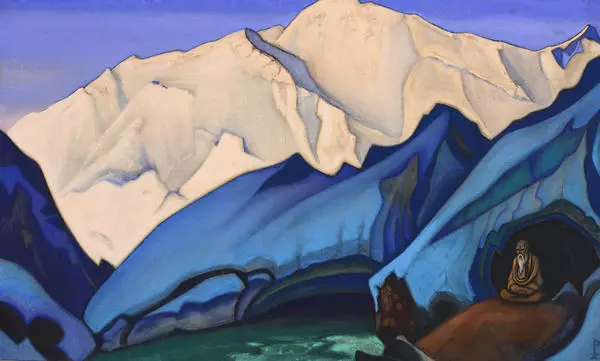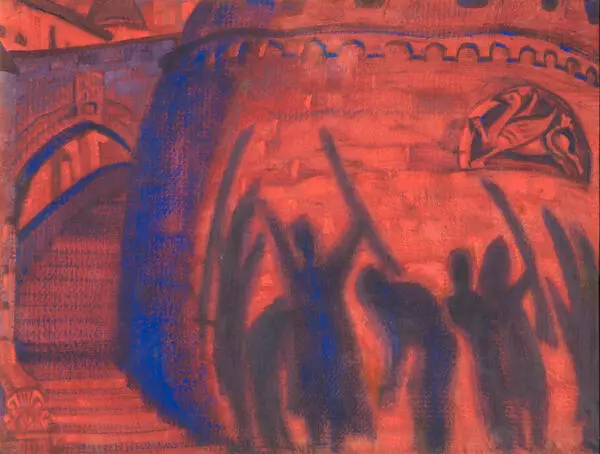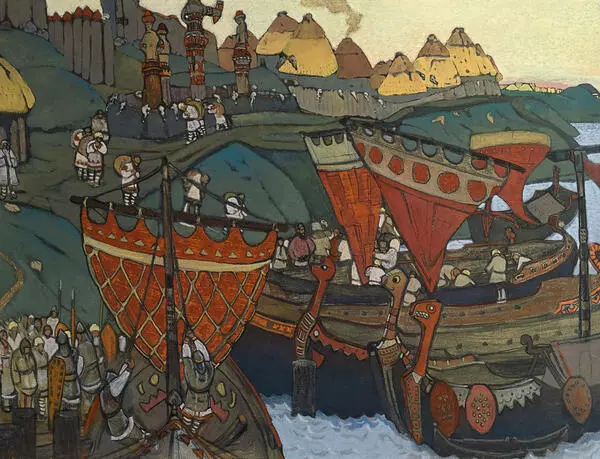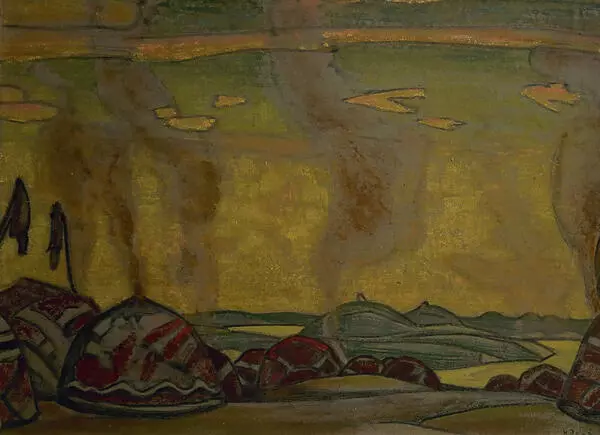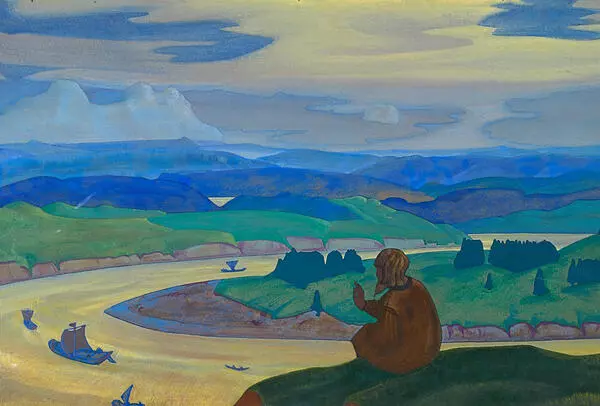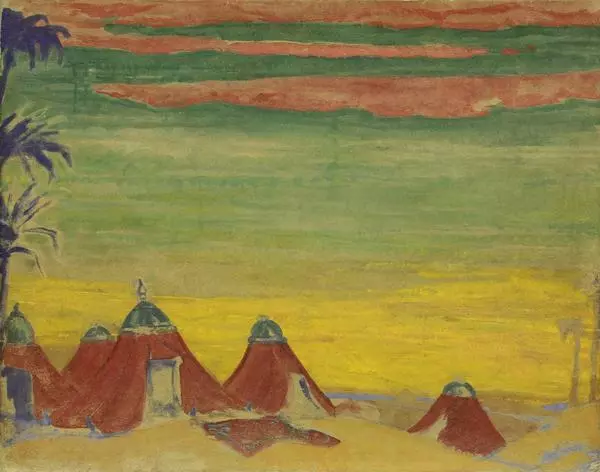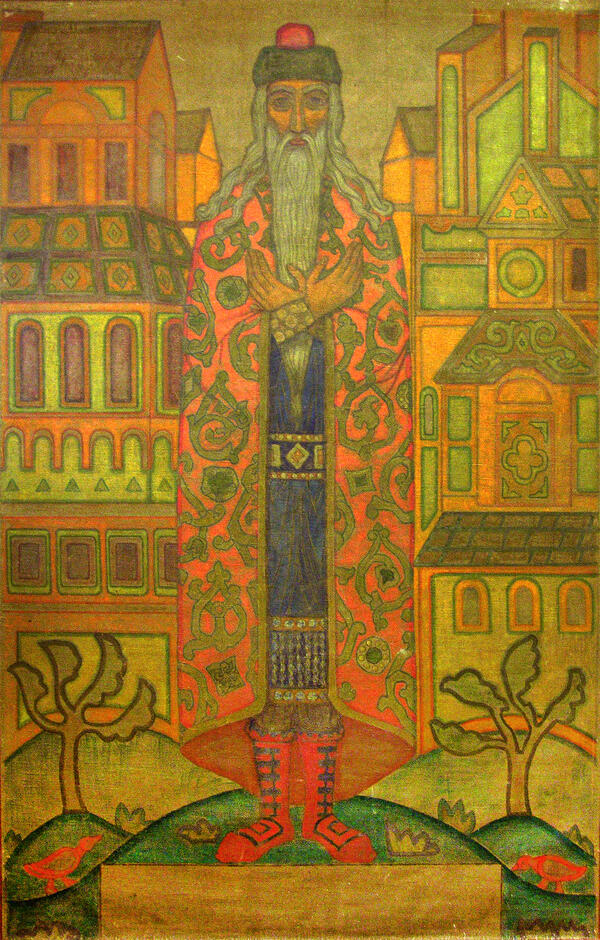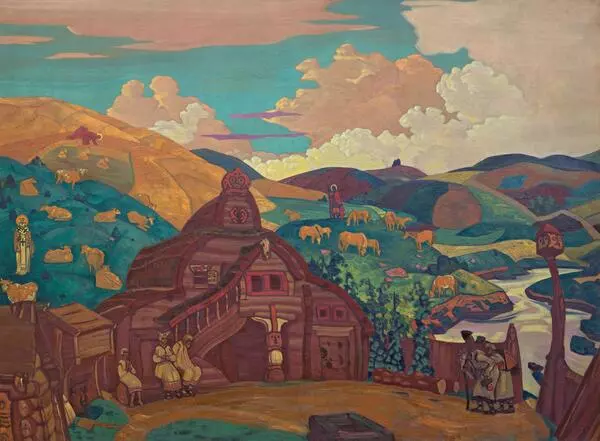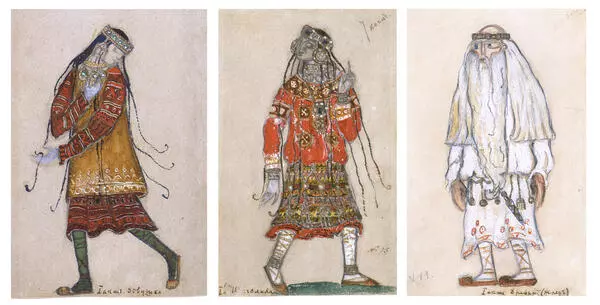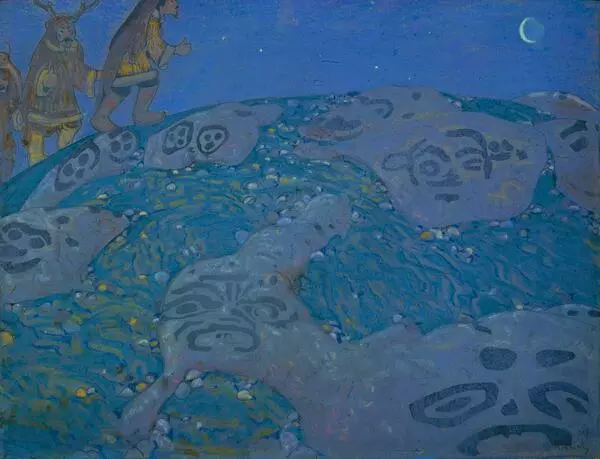The Russian artist and traveler Nicholas Konstantinovich Roerich (1874–1947) linked the national spiritual tradition with historical events of the remote past, the unsolved mysteries of popular beliefs. The beauty of the forms in the works of ancient people attracted the artist.
The search for traces of the ancient Slavic culture led Nicholas Roerich to the North. In 1899, he traveled along the Great Water Route “from the Varangians to the Greeks.” He was impressed by the beauty of the North, Lake Ladoga and its islands, and the steep shores of Valaam. The artist was fascinated by the harsh nature of Karelia and Finland. Wherever he was, Nicholas Konstantinovich constantly wrote down folk legends and beliefs that nourished his work.
Roerich’s interest in the North and love for the pristine beauty of the region were embodied in the painting “Pomeranians. Morning.” This work sounds like a hymn to nature and people who live in peace and harmony. The stylized, planar image characteristic of Art Nouveau and the large size of the canvas enhance the impression of monumentality.
The artist depicted people in patterned clothes. A gray-haired old man admires nature, a woman walks with a child, young men hunt birds. Generality and decorativeness do not interfere, but, on the contrary, give a touching nature to a young man who bends over a bird. The color scheme of the painting resembles medieval frescoes. It is based on a combination of blue-green tones that have a calming effect.
In a symbolic form, the work of Nicholas Konstantinovich Roerich reflected his philosophical views. The master believed that harmony should be sought in communication with nature, awareness of the wholeness and value of being, continuity of the best traditions.
The poet Nicholas
Stepanovich Gumilev wrote from Paris,

